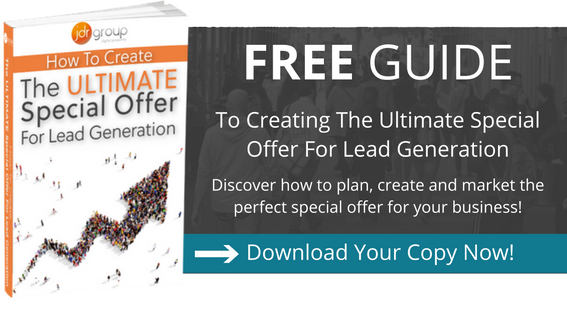How To Qualify A Lead – Gauging A Lead’s Interest

A lot of businesses keep a lead or prospect database full of names, email addresses, and phone numbers that they sometimes use for email marketing and telephone outreach. But how many of these people actually qualify as leads or, to put it another way, how many are genuinely interested in your services?
Nurturing a lead to the point where they become a paying customer requires an investment in time, money, and resources, which is why a key metric we follow in our marketing campaigns is the cost per lead. Our aim is to get this cost as low as possible and to reduce it over time, to give our customers a better return on investment (ROI) from their lead acquisition spend. It follows from this that the more interested a lead is to begin with, the less it will cost to convert them, and the less time it will take. Also, there are some people who may sign up for your newsletter who aren’t really interested in your services at all or have a very low level of interest. These people may take a lot of resources to convert – if at all – and you may be better off spending your time and money nurturing prospects with a higher interest level.
Therefore, when determining how to generate more leads from your website, or more leads from social media, a key consideration is lead qualification – accurately gauging a lead’s interest in your business at that point in time.
How to qualify a sales lead
1) Be clear about your target customers/buyer personas
The definition of a qualified lead is someone who closely matches your buyer persona, or ideal customer type, so the first step in improving the quality of your leads is to ensure your buyer personas are accurate, detailed, and reflective of your real-world customer base. Buyer personas are representative profiles of the type of buyer you deal with when making sales. You can go into as much detail with demographic details as you feel is useful, but be sure to include solid qualifying information such as the buyer’s budget range, their authority within the company (e.g. can they make decisions on their own authority, or do they need to consult other people), their needs and challenges, and the timeframe they need the service in. Use this information to determine whether a lead is likely to be interested in your business, and if you are in a position to help them.
2) Understand the buyer journey
People don’t generally become signed up brand enthusiasts on day one. There is a process of knowledge building and education, in which the prospect develops trust in your business and comes to understand the ways in which your products and services address their need. Understanding where each prospect sits in the cycle is an important part of lead qualification, as it determines the type of content you use and the way in which you communicate with them. A prospect may not be ready to purchase today, but that doesn’t mean you should dismiss the lead or assign them a lower priority. It simply means they need greater nurturing, and attention to addressing the questions they have right now, rather than pushing a decision they may not be ready to make.
3) Use lead scoring
Qualifying sales leads isn’t a black-and-white process. Some prospects are more or less valuable than others, and more or less likely to take action, so lead scoring is a useful way of stratifying your database and focusing your resources on the most appropriate people. Lead scoring is based on engagement with your business, whether through clicks on your website, email open rates, social media outreach, and so on. The more touches a prospect has with your marketing content, the higher their lead score. A high lead score could indicate a greater readiness to make a purchase or increased interest in your brand, and should be tracked over time in response to different marketing approaches. By using a marketing automation platform, such as HubSpot, you can create fluid and accurate lead scores based on a range of engagement fields, and set them up so they update automatically.
4) Ask the right questions
The sales process is a conversation between yourself and your customer, so successfully gauging a lead’s level of interest largely hinges on asking the right questions. Begin by finding out about the prospect’s current situation, including their motivations, their budget, and their needs – this allows you to tailor your offering. You can then go on to help the lead understand how your business can help resolve the problems they face, by explaining the specific benefits and value of what you offer. This begins to paint a picture of your value proposition and can be reinforced – if appropriate – by discussing the potential negative impacts of not resolving the problems the prospect faces (in terms of lost revenues, wasted time etc).
Find out more about how to generate leads
The better qualified your leads are, the easier they are to convert, and the less money you spend acquiring each sale, so it pays to adopt a strong lead qualification strategy as part of your nurturing process. At JDR, we help businesses discover the most cost-effective ways of growing their business, generating leads, and closing sales, so to find out more about how we can help you achieve your growth plans, please get in touch today.
Image Source: Pixabay



